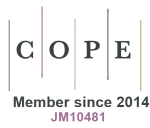Differences in personal and lifestyle characteristics among Zimbabwean high school adolescents with and without recurrent non-specific low back pain: a two part cross-sectional study
DOI:
https://doi.org/10.1186/s40945-015-0014-9Keywords:
Adolescents, Risk factors, Zimbabwe, Recurrent non-specific low back painAbstract
Background: Recurrent non-specific low back pain (NSLBP) is increasingly becoming common among adolescents worldwide. A recent study in Zimbabwe showed a relatively high prevalence (28.8 %) among high school students. Influential associated factors, however, remain unclear. This is a significant shortcoming. The aim was to determine personal or lifestyle-related factors associated with recurrent NSLBP among high school adolescents in Harare, Zimbabwe. Methods: This study was part of a large epidemiological study conducted in two continuous parts. Part one sought to determine self-reported associated factors among 532 participants (mean age =16 ± 1.72 years) drawn randomly from selected government schools using a reliable and content-validated questionnaire (Kappa coefficient, k = 0.32–1). Part two purposively identified adolescents (N = 64, median age =17 years, interquartile range, IQR = 15–18 years) with a history of ‘severe’ recurrent NSLBP from part one based on a specific eligibility criteria and compared body mass index, relative school bag weight and hamstring flexibility with matched adolescents without NSLBP. Data was analysed using Statistica version 11. Independent t-tests or χ2 tests of association were used for continuous and categorical data, respectively. The statistical significance was set at p < .05. Results: Recurrent NSLBP was associated with self-reported factors such as perceptions of a heavy school bag [χ2 (1) = 85.9, p < 0.001]. A significant proportion of adolescents with recurrent NSLBP spent over 30 min carrying the school bag to and from school [χ2 (1) =32.2, p < 0.001]. It was also associated with prolonged sitting (p < 0.001), not playing sports [χ2 (1) =5.85, p = 0.02] and tight hamstrings [χ2 (1) =7.6, p = 0.006]. Conclusions: Although conclusions from this study are hesitant because of the cross-sectional nature of the study and the relatively small sample size in follow-up study, recurrent NSLBP is associated with perceptions of a heavy school bag, duration of school bag carriage, no sports participation, prolonged sitting on entertainment activities, and tight hamstrings. These findings add to the importance of promoting physical activity at school or home especially aimed at improving muscle flexibility.Downloads
Download data is not yet available.
Downloads
Published
2015-12-01
How to Cite
Chiwaridzo, M., & Naidoo, N. (2015). Differences in personal and lifestyle characteristics among Zimbabwean high school adolescents with and without recurrent non-specific low back pain: a two part cross-sectional study. Archives of Physiotherapy, 5(1). https://doi.org/10.1186/s40945-015-0014-9
Issue
Section
Research Article
License
Copyright (c) 2015 The Authors

This work is licensed under a Creative Commons Attribution-NonCommercial 4.0 International License.









